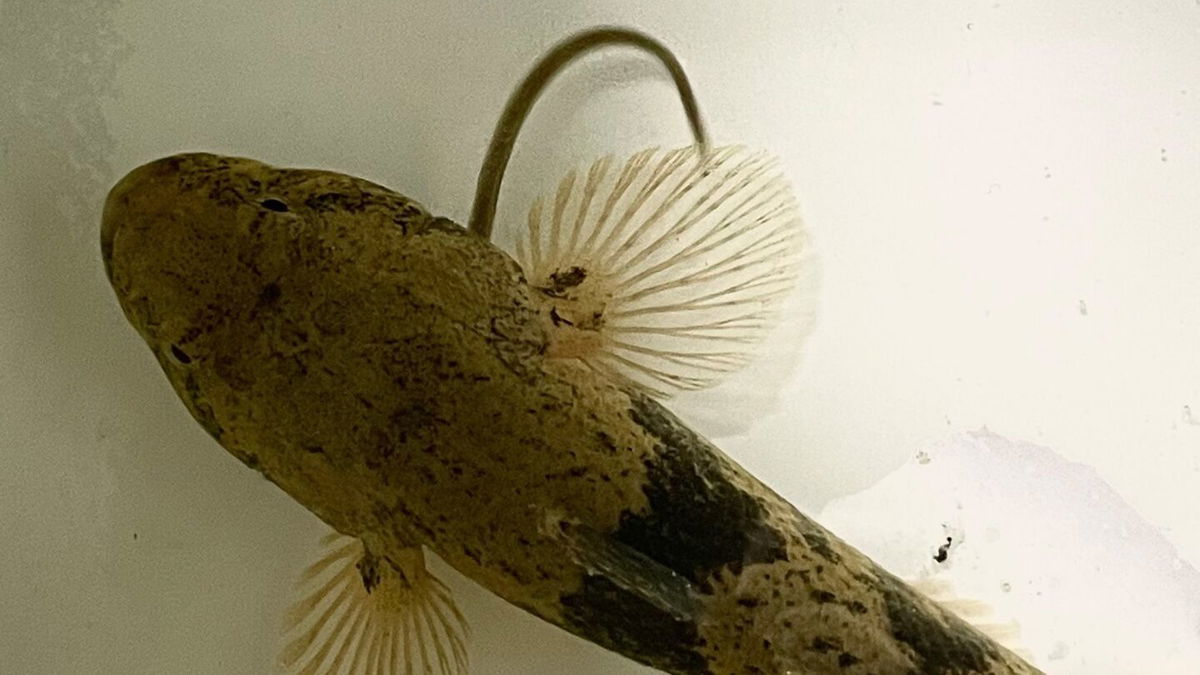Eels’ escape shows ‘the fight for survival doesn’t end after being eaten,’ scientist says

After being swallowed alive
By Mindy Weisberger, CNN
(CNN) — When you’re a predatory fish, sometimes the lunch you gobbled up doesn’t agree with you. Rather than accepting its fate, the still-living meal escapes your stomach and flees through the nearest orifice.
Dark sleeper fish (Odontobutis obscura) can gulp down young Japanese eels (Anguilla japonica) whole, but the swallowed eels can wriggle back up through the digestive tract and out of the stomach, swimming to freedom through the bigger fish’s gills, scientists recently discovered.
Such a feat may be hard to imagine, but researchers recorded the daring eel escapes using an X-ray video system, describing their findings in a study published Monday in the journal Current Biology.
“Before capturing the first X-ray footage, we never imagined that eels could escape from the stomach of a predatory fish,” said lead study author Yuha Hasegawa, an assistant professor in the Graduate School of Fisheries and Environmental Sciences at Japan’s Nagasaki University. “Witnessing the eels’ desperate escape from the predator’s stomach to the gills was truly astonishing for us.”
In general, it’s unclear what happens when a fish is swallowed whole by another fish, making this revelation “super surprising and informative,” said ichthyologist Kory Evans, an assistant professor of biosciences at Rice University in Houston.
“We do know that many fishes have a second set of jaws in their throat that they use to crush, tear or grind prey before swallowing, so the idea of anything escaping those jaws not only intact, but alive is pretty impressive!” Evans said in an email.
‘Kind of inspiring, really’
Hasegawa and two of his coauthors — Dr. Kazuki Yokouchi, a researcher with the Japan Fisheries Research and Education Agency, and Dr. Yuuki Kawabata, an associate professor at Nagasaki University — previously described this behavior in a December 2021 study. But while they observed swallowed eels wriggling tailfirst from dark sleepers’ gills, “we had no understanding of their escape routes and behavioral patterns during the escape because it occurred inside the predator’s body,” Hasegawa said via email.
Perhaps, the scientists hypothesized, the eels accessed the gills directly from the dark sleepers’ mouths. There was only one way to be sure: by using X-ray video to peer inside a predator that had just eaten an eel.
To do that, the researchers assembled fish subjects in lab aquariums. The dark sleepers measured about 5.7 inches (14.5 centimeters) long — about twice the length of the juvenile A. japonica eels. To make the eels more visible to X-rays, the scientists injected them with a harmless high-contrast medium of barium sulfate. Once a predator swallowed an eel, the sated fish was quickly moved to a special tank where the X-ray video camera was ready to roll.
“Due to the very narrow field of view of the X-ray video camera, we had to create experimental tanks of a size that could limit the movement of the predatory fish,” Hasegawa said. After about six months of trial and error, they captured the first views of what eels inside the dark sleepers were doing.
To escape a predator’s gut, an eel would insert its tail into the esophagus and then squirm backward. Once free of the stomach, the eel would poke its tail from the gills and undulate until the rest of its body emerged. On average, it took about 3 ½ minutes for a swallowed eel to reappear and swim away.
“The X-ray video of the eels circling in the stomach looking for a way out is particularly striking and shows that for some prey animals, the fight for survival doesn’t end after being eaten — kind of inspiring, really,” Evans said.
Japanese eels find an exit
Of the 32 eels that were eaten, 13 managed to reach their captor’s gills and poke their tails out, with just nine eels fully exiting. Fish that swallow their prey whole tend to wolf them down headfirst, and for sinuous A. japonica, as the eel’s head and upper body is sliding into a predator’s stomach, its tail will often linger in the esophagus. That maneuver could play a part in helping a determined eel squirm back out, according to the study.
Footage of the eels’ gill escapes bring to mind the terrifying chestburster appearance of the xenomorph in the “Alien” movies, said Dr. Prosanta Chakrabarty, a professor at Louisiana State University and curator of fishes at the LSU Museum of Natural Science. He was not involved in the new study.
While this escape behavior in fish has so far only been documented in Japanese eels, it could shed light on the peculiar habits of another eel species that Chakrabarty has studied — the snubnosed eel (Simenchelys parasitica) — which can inhabit “and presumably escape from the hearts of living sharks,” he said in an email.
Bigger, more muscular A. japonica eels that can tolerate the acidic, oxygen-poor environment of a stomach may have a better survival rate after being swallowed, but more research would be needed to know for sure, the study authors said.
“Further experiments involving prey-predator interactions with various sizes of eels, while measuring their locomotory performance and tolerance to severe environments, are necessary to identify the specific factors that enable successful escape,” Hasegawa said.
Mindy Weisberger is a science writer and media producer whose work has appeared in Live Science, Scientific American and How It Works magazine.
The-CNN-Wire
™ & © 2024 Cable News Network, Inc., a Warner Bros. Discovery Company. All rights reserved.

